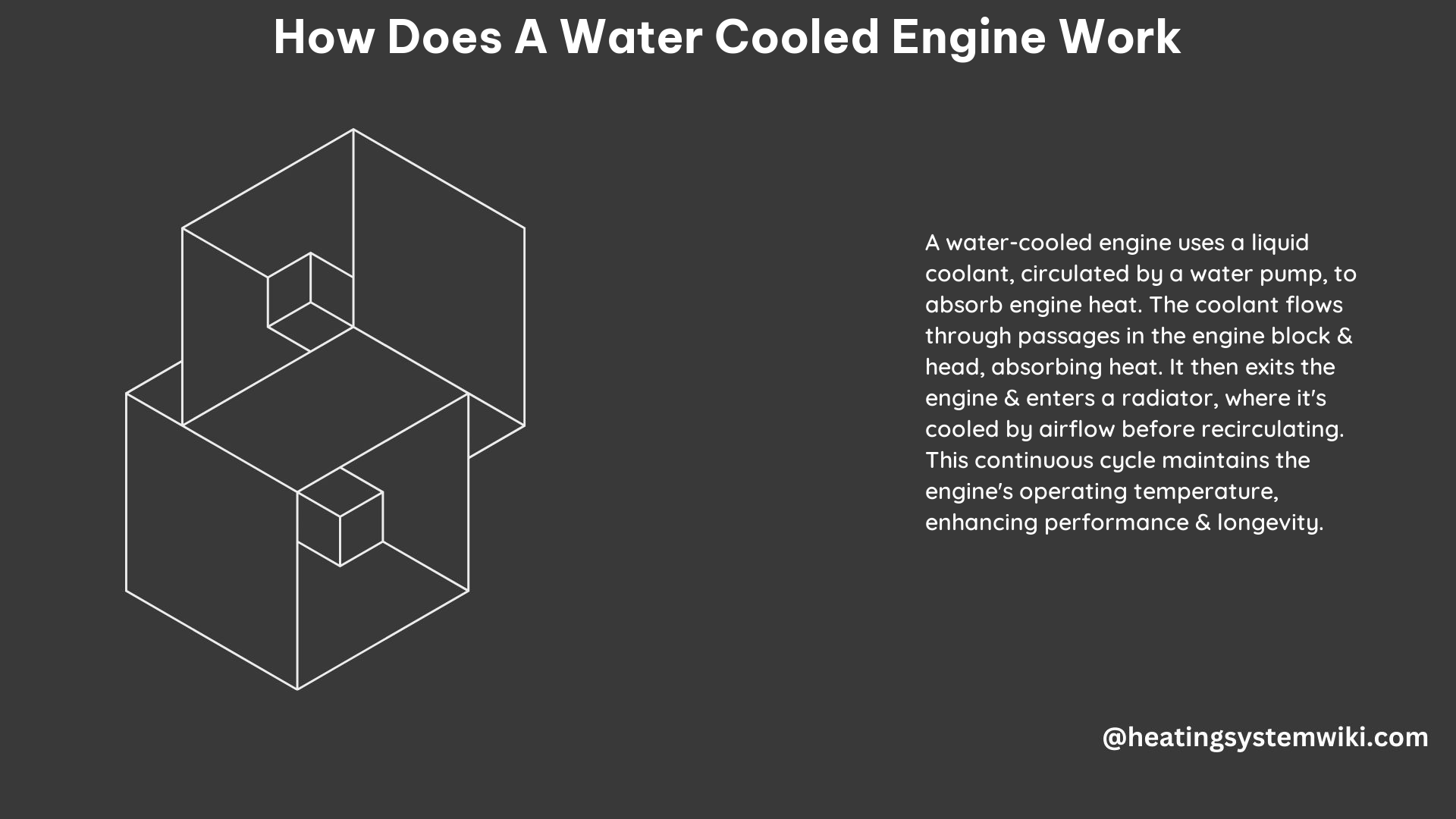A water-cooled engine is a type of internal combustion engine where the heat generated during the combustion process is dissipated through a liquid coolant, typically water or a water-based mixture. This cooling system helps maintain the engine’s optimal operating temperature, preventing overheating and ensuring efficient performance. Let’s dive into the intricate workings of a water-cooled engine.
Coolant Circulation
The heart of a water-cooled engine is the interconnected network of coolant channels running through the engine block and cylinder head. These channels form a closed-loop system, allowing the coolant to circulate throughout the engine. At the top of the cylinder head, all the coolant channels converge, enabling the coolant to flow freely.
The coolant is propelled through this system by a water pump, which is typically driven by a serpentine belt connected to the engine’s crankshaft. The water pump uses a radial impeller design to create a suction force, drawing the coolant from the radiator and pushing it through the engine block and cylinder head.
Thermostat Regulation

A crucial component in the water-cooled engine’s cooling system is the thermostat. This valve-like device regulates the flow of the coolant, ensuring the engine reaches and maintains its optimal operating temperature.
When the engine is cold, the thermostat’s bypass valve remains open, allowing the coolant to recirculate through the engine without passing through the radiator. This helps the engine warm up quickly, improving fuel efficiency and reducing emissions during the cold start-up phase.
Once the engine reaches its operating temperature, typically around 195°F (91°C), the thermostat’s valve closes, forcing the coolant to flow through the radiator. Here, the excess heat is dissipated to the surrounding air, effectively cooling the coolant before it re-enters the engine.
Radiator and Heat Dissipation
The radiator is the primary heat exchanger in the water-cooled engine’s cooling system. It is designed to transfer the excess heat generated by the engine to the atmosphere. The radiator has an inlet port, where the hot coolant from the engine enters, and an outlet port, where the cooled coolant returns to the engine.
The radiator is equipped with a pressure cap, which plays a vital role in maintaining the appropriate pressure within the cooling system. This pressure helps prevent the coolant from boiling, which could lead to overheating and potential engine damage.
As the coolant passes through the radiator, it dissipates its heat to the surrounding air, which is typically facilitated by a radiator fan. The fan helps draw air through the radiator’s fins, enhancing the heat transfer process and ensuring the coolant is effectively cooled before re-entering the engine.
Coolant Temperature Monitoring
The water-cooled engine’s cooling system is equipped with one or more coolant temperature sensors, which monitor the engine’s temperature. These sensors provide real-time data to the engine control unit (ECU), which then uses this information to optimize various engine functions, such as fuel injection and ignition timing.
The ECU’s ability to monitor and respond to the engine’s temperature is crucial for maintaining optimal performance, fuel efficiency, and emissions control. Some engines may also use the coolant temperature data to control the radiator fan, ensuring the cooling system operates at peak efficiency.
Maintenance and Troubleshooting
Proper maintenance of the water-cooled engine’s cooling system is essential for its longevity and reliable performance. Regular checks and servicing include:
- Coolant level inspection and top-up as needed
- Hose, clamp, and belt inspection for wear and replacement if necessary
- Thermostat and radiator inspection, cleaning, or replacement if required
- Coolant flush and replacement according to the manufacturer’s recommendations
In colder climates, it is also important to use a commercial coolant (antifreeze) mixture to prevent the fresh water from freezing and causing potential engine damage.
By understanding the intricate workings of a water-cooled engine and following proper maintenance practices, you can ensure your engine operates at peak efficiency, minimizing the risk of overheating and prolonging its lifespan.
